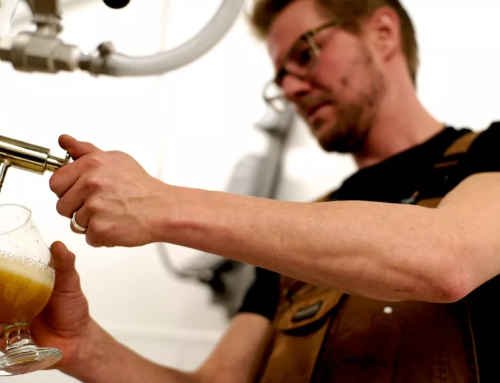How to flavour kombucha
Are you tired of following recipes and want to learn how to make your own kombucha?
You can make kombucha sweet, spicy, savoury or just plain using different types of tea, fruit, herbs and spices.
The combinations are endless. And you don't need a recipe to do it. Just follow my advice to create your own flavour combinations.

PRIMARY FERMENTATION
The primary fermentation is to make kombucha with tea, sugar and a SCOBY. (As in this recipe here.)
What many people don't mention is that you can use different types of tea and tea blends to obtain different flavours during primary fermentation.
Most recipes use traditional black Oolong tea to make kombucha, but you can use any type of black, green or white tea to get different results.
Green tea gives a lighter-tasting kombucha, while Pu'erh tea gives a stronger-tasting kombucha.
You can use Darjeeling, English Breakfast, jasmine green tea, white teas and many others.
Personally, I like to use a tea that is half green and half oolong during the primary fermentation. This gives a light green apple flavour that is much appreciated.
Do not use flavoured teas or herbal teas at this stage of fermentation, as they will not provide the SCOBY yeast with enough nutrients.
Once you've brewed your kombucha, the second step is to flavour it and bottle it with juices, fruit and other foods to keep it fresh. secondary fermentation.
 SECONDARY FERMENTATION
SECONDARY FERMENTATION
Juice, fruit, herbs (even hay) and spices can be added after primary fermentation to make your kombucha fruity, sweet or spicy and have a unique character in the mouth.
After flavouring the kombucha, you bottle it and leave it to ferment a second time for a few days. This is called the secondary fermentation.
FRESH FRUIT JUICE
Fresh juice is a sure way to flavour kombucha. The fresher the juice, the more bubbles and interesting flavours the kombucha will have on the palate.
For 4-5 litres of kombucha, add 250 ml of your favourite juice.
Pour the plain kombucha into a large jug, then add the juice, stir, taste, add more juice if you think it needs it, then bottle it.
FRUIT
Use freshly cut, pureed, frozen, dried and freeze-dried fruit to flavour the kombucha.
Add them directly to each bottle, except for pureed fruit. Pureed fruit should be mixed in a pitcher with the kombucha and then bottled.
Fresh cut fruit 15-30 gr. for each 50 cl bottle.
Dried and freeze-dried fruits are more concentrated, so less is needed for flavouring. 15-30 gr. per bottle.
Fruit puree Use about 30g per litre of kombucha.
First mix it with the kombucha in a jug, then bottle it.
The flavour is more concentrated and the yeasts like it so much that it becomes carbonated very, very quickly.
Experiment with the amount of fruit you add to get the flavour you want.
Add more for a stronger fruit taste and less for a lighter taste.
 HERBS, SPICES AND TEA
HERBS, SPICES AND TEA
Mint, lavender, thyme, rosemary, ginger, cinnamon, saffron, chilli, pepper and countless other herbs and spices can be used to flavour your kombucha.
The only limit is your imagination.
The Lemon and Thyme Kombucha is a real hit with enthusiasts.
You can add a few sprigs of fresh thyme and lemon juice for flavour.
In autumn and winter, I like to add cinnamon and cloves or pumpkin pie spices.
If you want to flavour the kombucha with only herbs, add a little honey or organic sugar to reactivate the yeasts involved.
Half a teaspoon (or 2.5 gr.) per bottle will be enough to reactivate the fermentation process.
Flavoured tea :
You can also flavour the kombucha with flavoured tea.
Wild fruit and hibiscus tea work well, and pumpkin spice tea makes an incredible kombucha.
For around 4 litres of kombucha, brew 250 ml of tea using 2-4 tea bags. Leave it to steep long enough for it to become strong, then add organic sugar or quality honey (around 125 ml).
Once it has cooled, add it to your plain kombucha and bottle.
The amount of flavouring you add to your kombucha depends on your personal taste.
You can start by following a recipe and then experiment from there or just experiment to get started.
Make notes on what you have done, so that you can make adjustments next time.
The more you make, the better your kombucha will be.










invaluable advice! summer's coming and kombucha's going to be cool. thank you!
Hello Eliane, the whole Prêt A Survivre team wishes you a great summer of kombucha recipes and flavourings.